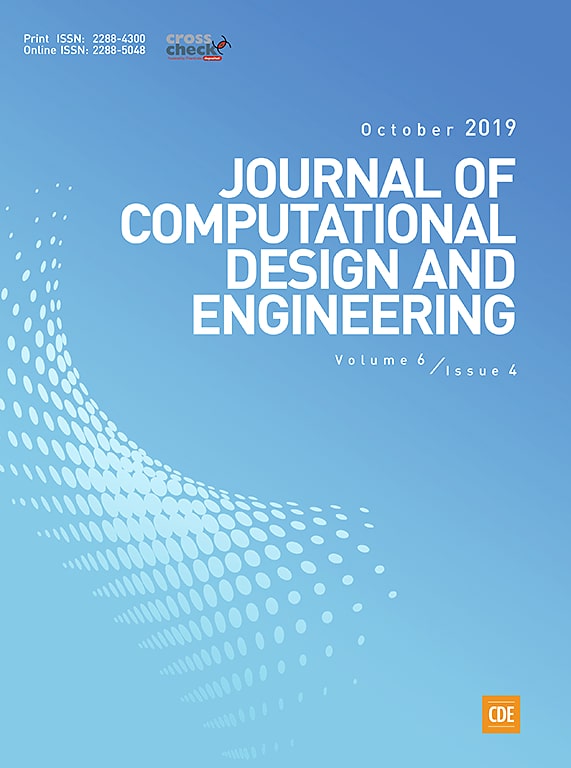
The Moss Growth Optimization (MGO): Concepts and performance
Boli Zheng, Yi Chen, Chaofan Wang, Ali Asghar Heidari, Lei Liu, Huiling Chen
Journal of Computational Design and Engineering, Oxford press
DOI, 2024

Boli Zheng, Yi Chen, Chaofan Wang, Ali Asghar Heidari, Lei Liu, Huiling Chen
Journal of Computational Design and Engineering, Oxford press
DOI, 2024
Algorithm Design: "Moss Growth Optimization (MGO) mimics the natural growth processes of moss to achieve effective optimization through a combination of local and global search strategies."
We are excited to present the Moss Growth Optimization (MGO) algorithm and invite you to explore its performance.
Abstract: The moss growth optimization (MGO), introduced in this paper, is an algorithm inspired by the moss growth in the natural environment. The MGO algorithm initially determines the evolutionary direction of the population through a mechanism called the determination of wind direction, which employs a method of partitioning the population. Meanwhile, drawing inspiration from the asexual reproduction, sexual reproduction, and vegetative reproduction of moss, two novel search strategies, namely spore dispersal search and dual propagation search, are proposed for exploration and exploitation, respectively. Finally, the cryptobiosis mechanism alters the traditional metaheuristic algorithm's approach of directly modifying individuals' solutions, preventing the algorithm from getting trapped in local optima. In experiments, a thorough investigation is undertaken on the characteristics, parameters, and time cost of the MGO algorithm to enhance the understanding of MGO. Subsequently, MGO is compared with ten original and advanced CEC 2017 and CEC 2022 algorithms to verify its performance advantages. Lastly, this paper applies MGO to four real-world engineering problems to validate its effectiveness and superiority in practical scenarios. The results demonstrate that MGO is a promising algorithm for tackling real challenges.
Moss Growth Optimization (MGO): This innovative optimization algorithm is inspired by the natural growth patterns of moss. By employing both local and global search strategies, MGO is designed to tackle complex problems effectively. Below, we provide a comprehensive overview of the fundamental components and processes involved in MGO.
Conceptual Foundation: The essence of MGO lies in emulating the adaptive growth of moss. Moss optimizes its resource acquisition in response to environmental factors. This concept is translated into an optimization framework, enabling the algorithm to explore and exploit the solution space to discover optimal results.
Algorithm Structure: The MGO algorithm is structured into several distinct phases, each contributing to the optimization process:
Initialization: The algorithm begins with a random distribution of moss spores, each representing a potential solution within the search space.
Growth Simulation: Spores grow and spread based on local resources and environmental conditions, mimicking natural moss expansion.
Adaptation: Growth parameters are dynamically adjusted to enhance the exploration and exploitation of the search space.
Optimization: Solutions are iteratively refined based on accumulated growth patterns and experiences.
Termination: The process continues until a stopping criterion is met, such as convergence or reaching a maximum number of iterations.
Determination of Wind Direction: Wind plays a significant role in moss growth by dispersing spores. MGO incorporates a mechanism to determine wind direction, which helps avoid local optima traps. This mechanism directs the evolutionary path based on the positional relationship between the majority of individuals and the optimal individual.
Spore Dispersal Search: This mechanism supports global exploration by simulating the dispersal of spores influenced by wind conditions. Spores disperse over various distances, aiding individuals in exploring new areas and maintaining population diversity.
Dual Propagation Search: Drawing from moss reproduction, this method involves both sexual and vegetative reproduction. It enhances local exploitation by generating new individuals around the optimal solution, facilitating the rapid identification of the best solutions.
Cryptobiosis Mechanism: This mechanism improves the algorithm by allowing multiple explorations of an individual’s solutions. It helps prevent local optima traps and enhances the overall quality of the population.
Summary of MGO Stages: To summarize, MGO incorporates several key mechanisms inspired by moss:
Spore Dispersal Search: Facilitates global exploration based on wind-driven spore dispersal.
Dual Propagation Search: Enhances local exploitation around optimal solutions.
Cryptobiosis Mechanism: Allows multiple explorations to avoid local optima traps and improve population quality.
The MGO algorithm initiates with random individuals and iterates through phases of determining evolutionary direction using wind, performing spore dispersal search, and updating solutions based on the cryptobiosis mechanism as required.